I'm multiplexing a pair of Nixie tubes. The high-side control is done with two pairs of transistors, MPSA92 high-voltage PNP to switch the 160V to the tubes, and a BS108 to control the base of the PNP:

simulate this circuit – Schematic created using CircuitLab
(R2 represents the Nixie tube).
The multiplexing is at 1000 Hz. However, I'm having some ghosting issues, and as seen on the 'scope, and in simulation, the problem is the turn off time of the PNP. It is quite slow, around 100-200µs.
I want to optimize this - I read about Baker clamps, but I was confused as there are no circuits with PNP transistors about them. I tried adding two diodes, one from collector to R1, and another from base to R1. However, this didn't improve anything at all! I'm not even sure there is such a thing as a PNP Baker clamp...
So, what are the possible options for fixing the turn-off delay?